This article has been edited for Faith & Fitness Magazine. Read the complete report in a printable PDF format.
BEYOND THE MUSCLE-MANIA THERE IS A DEEPER ISSUE
 Who are Matthew McConaughey, Jason Statham, Levi Johnston, and Arnold Schwarzenegger? Why is it so cool to see a muscular physique and ripped abs? Are these not only the ideal, but the epitome of sex appeal? In the case of Levi Johnston, he first gained public presence as the contrarian father of Sarah Palin’s grandson. Now he wants to improve his image and profit from gaining an audience by posing nude for Playgirl Magazine. These images send a message to boys and men.
Who are Matthew McConaughey, Jason Statham, Levi Johnston, and Arnold Schwarzenegger? Why is it so cool to see a muscular physique and ripped abs? Are these not only the ideal, but the epitome of sex appeal? In the case of Levi Johnston, he first gained public presence as the contrarian father of Sarah Palin’s grandson. Now he wants to improve his image and profit from gaining an audience by posing nude for Playgirl Magazine. These images send a message to boys and men.
That message is: Use your body as an instrument in the daily muscle match for attention and self-gain. What the message isn’t: Your body is the temple of your soul. Media portrays this kind of Godly perspective as passive and weak. Respect and value are out of vogue in a culture that feeds on continually pushing the boundaries to new extremes.

So what specifically are the issues facing teen boys and men today? First of all, men are flooding gyms in unprecedented numbers in order to change the appearance of their bodies. This reflects a crisis that has largely gone unnoticed. Studies have shown that even as early as elementary school, males are becoming dissatisfied with their bodies. The common theme seems to be that males may have an excessive, but secretive, concern with their bodies where they believe that they are not muscular enough, though they may be big already.
Secondly, I believe the discrepancy isn’t being fairly addressed in research or the media. For example, body image disorders, such as anorexia and bulimia, are traditionally associated with girls and women; however, males can and do suffer from disordered body image as well. Boys and men have been exposed to action toys and varying images in the media for years, exploiting the desirability of the muscular, fit body.
Take a look:
– If the ‘GI Joe extreme’ of the 1990s were life-size, he would have a 48 to 55 inch chest, 32 inch waist (with chiseled abs), and impossible 27 to 32 inch biceps, which is physically impossible to replicate in nature.
– Some of the body suits of Batman have more muscles in the abdominal area than are even humanly possible.
– A Playgirl centerfold model of 1976 would need to shed 12 pounds of fat and gain 27 pounds of muscle to be a centerfold of today.
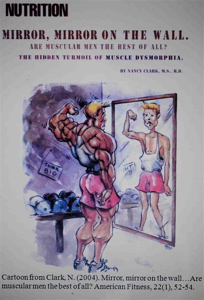 Although the impact of media messages on women has been widely studied and discussed, the literature on males is just beginning. Most body image research articles are solely focused on females. Perhaps one of the reasons the issue isn’t being addressed is that men internalize these muscular ideals, which contribute to body dissatisfaction and poor body image. In secret males will confess to being dissatisfied with their bodies. In fact, dissatisfaction is growing from 25% in 1972 to 67% in 1997.
Although the impact of media messages on women has been widely studied and discussed, the literature on males is just beginning. Most body image research articles are solely focused on females. Perhaps one of the reasons the issue isn’t being addressed is that men internalize these muscular ideals, which contribute to body dissatisfaction and poor body image. In secret males will confess to being dissatisfied with their bodies. In fact, dissatisfaction is growing from 25% in 1972 to 67% in 1997.
THE ADONIS COMPLEX
Harvard psychiatry professor Harrison Pope and his colleagues coined the term the “Adonis Complex” in 2000. They refer to Adonis, the mythical Greek god who exemplifies ideal masculine beauty and the desire of all women. Other researchers coined their own terms like, Reverse Anorexia Nervosa, Bigorexia, Herculism, Muscle Mysmorphia and Drive for Muscularity. They all refer to the same concept and in everyday language are called inferiority complexes, small man syndrome, Superman syndrome or Napoleon complex
.
THE HISTORY OF THE “MASCULINE” BODY 
Historically the built male body is viewed as an asset. Muscularity has come to symbolize elevated functioning. From early times muscular men went hunting and gathering to provide for their families. Strong muscles are associated with being war-like for battles giving a man the ability to defend territory and protect family and property. In more recent history a man’s muscular strength was critical for and a result of manual occupations and labor. However, the 19th-century brought the evolution of the technological age, which lead to a “crisis in masculinity” where the need for the body was less necessary. Then the 20th-century brought the Women’s Movement which emphasized equality. Males thus felt more pressure to sustain the gender gap. The hyper-masculine body symbolizes a reclaiming of masculinity.
BUILT BODIES TODAY – WHAT MEN GAIN WITH THEIR PHYSICAL ASSETS
In their community many men find their confidence and esteem are reinforced by those around them. This happens both in and out of the gym. If they can have the presence of a hyper-masculine body they can be more intimidating. For example bouncers, body guards and state patrol officers are often muscular and command a more threatening role. Compared to ordinary men, muscular men tend to command more respect and are deemed more powerful, threatening, and sexually potent. Men often need others to perceive them in this way and to take them seriously. Continually pursuing the ideal masculine body image for these reasons is ultimately a bad strategy, as perfection is only possible through God.
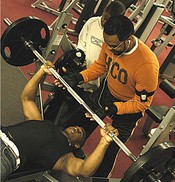
You may be familiar with the term the “pump” during a workout. It is a feeling achieved when the blood engorges the muscles. The process of working out involves intense self-discipline and a willingness to endure a significant amount of pain. Resistance training is all about pushing muscles. The pain actually creates a pleasurable sensation and a sense of satisfaction. What you may not be familiar with is that the Bible builds on that “pump” experience. It tells us that we must endure hardships in our faith just as athletes endure hardships in training. It says, “Endure hardship with us like a good soldier of Christ Jesus. No one serving as a soldier gets involved in civilian affairs—he wants to please his commanding officer. Similarly, if anyone competes as an athlete, he does not receive the victor’s crown unless he competes according to the rules.” Rigorous training and the pursuit of ever stronger muscles may in fact be a way that men respond (whether they understand it or not) to the deep spiritual calling within them to please God.
In focusing on the body in the weight room, men are able to construct a sense of masculinity within a space commonly viewed as male. They work to develop and display body images that signify traditional manliness. Today many jobs are less physical, depriving men of natural activity they were designed to do. The gym, sports and practices utilizing the physical form provide a sanctuary for men and an atmosphere to display their bodies’ functionality and purpose. However, these spaces and activities, when they lack a faith presence and spiritual context fail to help men discover and reveal their greater strengths.
YOUR BODY – A CHRISTIAN CONTROVERSY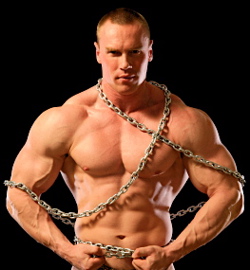
It is unfortunate that Christians to often focus only on spiritual growth and then only in the sanctuary on Sunday. There is a fear among Christians in addressing issues related to the body. They often have a distorted spiritual perspective. The Western Culture views a distinct separation between the mind and the body. Specifically, Jews and Christians historically view the body as a source of corruption and a gateway to sin while the intellect is more righteous and useful to develop. The body became viewed as bad. The Industrial Age (the era of economic growth and technology) further enlarged this gap by focusing solely on the instrumentality of the physical body.
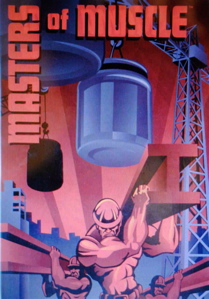 So Christians created their own controversy – a quandary that keeps them and others from moving forward with God. The secular world views the body as a tool for progress and the Christian world incorrectly views it as the Devil’s temptation. Given this dualistic dilemma, I have devoted my professional career to incorporate my personal survival story to help others bridge the gap between these two views. The body and spirit can work in unity and harmony. The Bible shows that the human body is a holy creation of God and a living temple to the Holy Spirit. For this reason, we should treat our bodies with respect, strengthen them and make them part of our Christian identities.
So Christians created their own controversy – a quandary that keeps them and others from moving forward with God. The secular world views the body as a tool for progress and the Christian world incorrectly views it as the Devil’s temptation. Given this dualistic dilemma, I have devoted my professional career to incorporate my personal survival story to help others bridge the gap between these two views. The body and spirit can work in unity and harmony. The Bible shows that the human body is a holy creation of God and a living temple to the Holy Spirit. For this reason, we should treat our bodies with respect, strengthen them and make them part of our Christian identities.
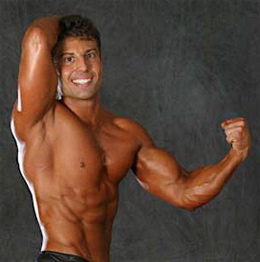 TAKE A CLOSER LOOK – BEYOND THE MUSCLES THERE IS A WHOLE LOT MORE
TAKE A CLOSER LOOK – BEYOND THE MUSCLES THERE IS A WHOLE LOT MORE
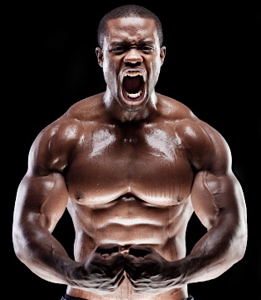 THE CATCH 22
THE CATCH 22
In our culture asking for help is a weakness. “I can do it myself” is considered normal. For men, this is amplified. Somehow being a man has erroneously come to mean that asking for help is a weakness. Men are told – Don’t do it. Don’t show emotions or else you are weak or sensitive. Be “macho” and brave to the point of being fearless or aggressive. Be controlling or in-control. Be the head of the household and in-charge.
The modern Christian way of thinking does nothing to support men wrestling against such attitudes. After all Christians insist that we are not supposed to be concerned with our bodies. Further it is unacceptable or ‘feminine’ for men to pray together, cry together, ask for help and go to therapy or the doctor because we aren’t supposed to show any chinks in our armor. Boys and men are not supposed to talk or worry about such things. They hold it in. They are afraid of being ridiculed or judged if they show what’s underneath the armor. They don’t get any outlet, other than to return to the gym in the hopes of “exercising out” their stresses that they can’t talk about.
That is the Catch 22.
It is time for men to understand and insist that Christians not sit idle and silent while men suffer in silence – fearful to talk.
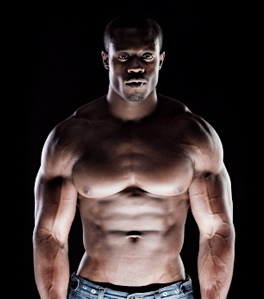
THE BALANCE OF PHYSICAL AND SPIRITUAL SELF
We all have an innate desire for balance and stability. Life is about enjoying the process, getting out of being stuck and growing. Destructive and negative actions interfere with this process and exacerbate imbalance and stagnation. Through constructive and positive actions and practice we grow and live balanced, purposeful lives. The first steps to change occur when we digest new information and increase our awareness. Look at the models of balance in Christianity, Wellness, and physical health:
The Holy Trinity: Father (God), Son (Jesus Christ) and Holy Spirit
Holistic Health: Mind, Body, Spirit
Physical Health: Exercise/Exertion, Nutrition/Supplementation, Rest/Recovery
As displayed in each of these systems, all three pieces are necessary for the whole. That is no accident. It reflects the design of God.
IS FOCUS ON THE BODY GOOD OR BAD?
 This seems to be where things go awry. Often, I hear dualistic thought processes. For example, “If you are striving to become a better athlete or simply trying to better your physique, you are vain and focused on worldly things. You can’t possibly balance your Christian journey with your physical growth.” Wrong. This thinking is very black and white; this or that; either/or. However, most everything in life occurs in the middle – between extremes. Moderation, Balance and holism all rely on the incorporation of pieces.
This seems to be where things go awry. Often, I hear dualistic thought processes. For example, “If you are striving to become a better athlete or simply trying to better your physique, you are vain and focused on worldly things. You can’t possibly balance your Christian journey with your physical growth.” Wrong. This thinking is very black and white; this or that; either/or. However, most everything in life occurs in the middle – between extremes. Moderation, Balance and holism all rely on the incorporation of pieces.
We are all given gifts from God, which can motivate or hinder. Recognizing and applying these gifts requires diligent training and practice. Even our weaknesses can become strengths by utilizing our bodily powers for a very intentional, non-self promoting purpose. A positive direction focuses energy on social concerns, others and service. You can be an instrument for good. Developing yourself physically helps you to be an instrument for others. It can lead to donating time, energy, money and other strengths to those in need. Through mentoring, leading and speaking up for others you can be active instead of passive.
Men move in a negative direction when physical training lacks spiritual training. In this case men seek personal superiority, which perpetuates incompleteness. Using yourself for yourself results only in personal gain. Men who do this develop and promote themselves continuously. They disengage and don’t give back once they’ve succeeded personally.
GODLIKE MUSCLES REVEAL REAL HARD WORK
Moderation and balance are not easy – and that is the point. It’s a daily battle to not give in to extremes. It’s easy to over train at the gym, not eat healthy, not go to church and not reflect the strength of Christ.
Anything worth doing is worth doing well. That takes hard work. Finding your place in the gym, in your relationships, paying attention to God’s plan and serving Him all require constant discipline and hard work. As Tom Hanks says in the movie A League of Their Own, “It’s supposed to be hard. If it were easy, everyone would do it. It’s the hard that makes it good.” Exercise and faith should be hard and painful at times but also rewarding throughout the process and in the end. If it wasn’t hard and painful or require work then everyone would be in shape and acting like Christ would be easy.
Easy isn’t for you. You know what it takes to build muscle. Building spiritual strength takes even more. You find meaning for your life in the process. That growth process occurs in your daily workout, prayer and in every way you practice life. With faith in God and trust in Him through the process you can learn, grow, and get better, stronger, and faster.
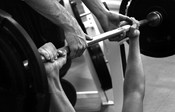 Challenge yourself to connect with other men who model balance and push for a vision of strength that is both spiritual and physical. Let others see how your weaknesses are transformed into strengths for God. You know that you have imperfections and sin. You also know that God can change you and develop you into a force for good. Deep down men want to reveal their muscles not just to display masculine beauty but to reflect the presence of God.
Challenge yourself to connect with other men who model balance and push for a vision of strength that is both spiritual and physical. Let others see how your weaknesses are transformed into strengths for God. You know that you have imperfections and sin. You also know that God can change you and develop you into a force for good. Deep down men want to reveal their muscles not just to display masculine beauty but to reflect the presence of God.
 Dr. Garrett Gilchrist currently works at Pacific Lutheran University’s Counseling Center in Tacoma, Washington where he specializes in body image disorders, addictions, and mind/body health. He earned his PhD in Clinical Psychology from Seattle Pacific University and Master’s and Bachelor Degrees from Gonzaga University. He has worked at Drug and Alcohol Treatment Facilities, a State Psychiatric Hospital, and four University Counseling Centers. He can be contacted at ggilchrist@plu.edu.
Dr. Garrett Gilchrist currently works at Pacific Lutheran University’s Counseling Center in Tacoma, Washington where he specializes in body image disorders, addictions, and mind/body health. He earned his PhD in Clinical Psychology from Seattle Pacific University and Master’s and Bachelor Degrees from Gonzaga University. He has worked at Drug and Alcohol Treatment Facilities, a State Psychiatric Hospital, and four University Counseling Centers. He can be contacted at ggilchrist@plu.edu.
This article has been edited for Faith & Fitness Magazine. Read the complete report in a printable PDF format.







